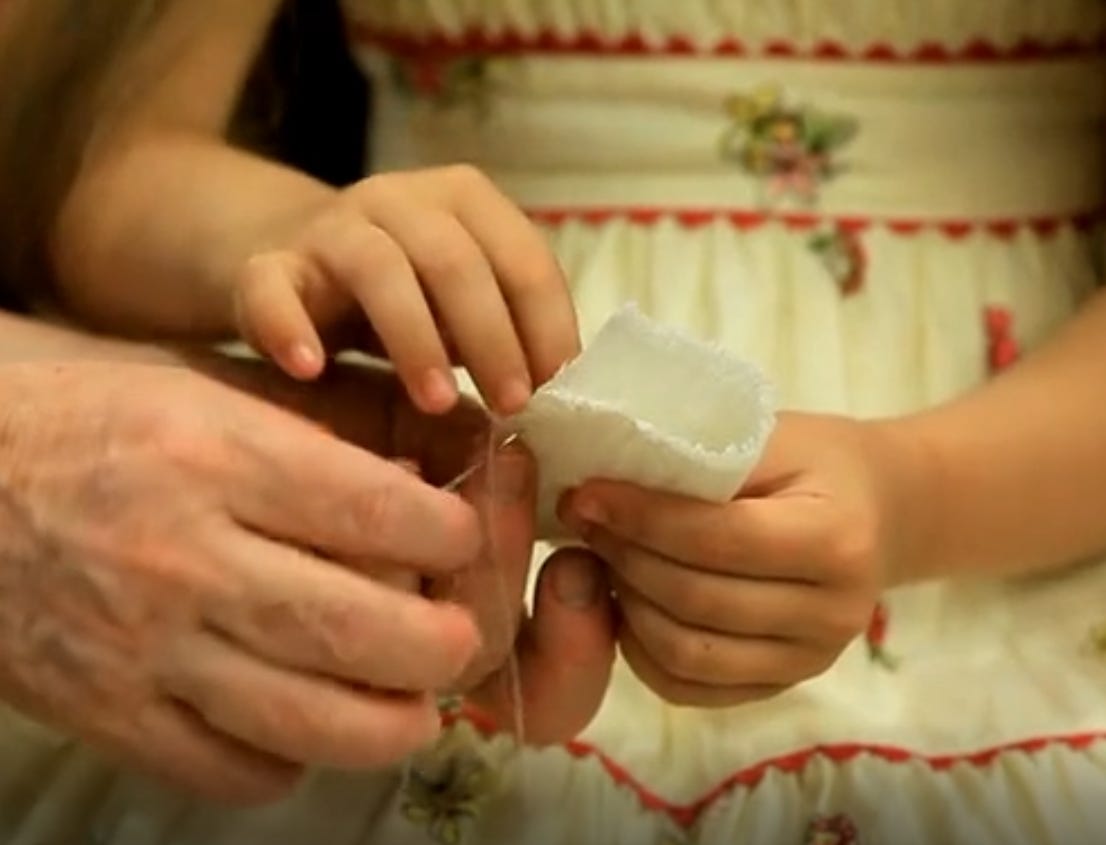Blog posts

Valentine's Day Traditions in the Middle Ages
Continuing my Valentine’s theme in the run up to the most romantic day of the year. Did you know that Valentine's Day was celebrated in the middle ages?
In the 14th century, it was customary for women to give their lovers a red rose as a symbol of love. And young girls would often make elaborate rose chaplets to wear in their hair on Valentine's Day.
But it wasn't all roses and romance. In medieval times, there was also a tradition of giving small gifts, like a handkerchief or a ring, to your sweetheart on Valentine's Day. And if you were feeling particularly generous, you might even give them a live animal, like a white dove or a little puppy.
Love poems were a popular way to express one's feelings. These poems, known as "love letters," were often written on parchment and decorated with intricate illustrations.
The tradition of giving chocolates also began during this time, with the Aztecs believing that cacao beans had aphrodisiac properties.
These days, we're more likely to give our loved ones chocolate or flowers, or maybe even take them out for a nice dinner. But no matter what you do to celebrate, don't forget to show your Valentine some love.
What are your favorite Valentine's Day traditions? Share them with us in the comments.
I hope you enjoyed this little taste of history. Don't forget to like, share, and subscribe for more fascinating facts and hidden histories.
I hope you enjoyed this little taste of history.
Don't forget to like, share, and subscribe for more fascinating facts and hidden histories.
==========================
Visit my Derbyshire Hearts Gallery
Framed Hearts and Hearts on canvas are available as prints from Derbyshire Hearts Collection

Valentine's Day Traditions in Pagan Times
As our thoughts turn to love at the approach of the most romantic day of the year, it’s interesting to look at how love was celebrated before the Christian church introduced Valentine’s Day.
Pre-Christian pagan traditions celebrated fertility as a vital aspect of life and survival. These festivals often marked the changing seasons, with a particular focus on spring and the renewal of life.
Spring festivals were a time for celebration, a time to give thanks for the blessings of the land, and a time to ask for the continued abundance that would ensure the survival of the community.
Various cultures across Europe had their unique fertility rituals, but common themes included the veneration of nature, deities of fertility, and communal celebrations.
The rituals and traditions of the festivals were often intricate and rich in symbolism. It was a time when the people of ancient cultures would come together to honour their gods and goddesses associated with fertility, such as Demeter, Persephone, Freyja, and Cernunnos, who were honored as people prayed for a bountiful harvest and a prosperous year ahead.
Village fertility festivals were also a time for courtship and marriage, as the young men and women of the villages would gather to find their life partners.
Many pagan traditions are still included in our modern traditions today.
Such as maypole dancing and floral wreaths, which was introduced by the Celtic festival of Beltane, symbolizing life and fertility.
Chocolate Eggs and rabbits are symbols of fertility introduced by the Germanic festival of Ostara.
And spring blooms for the Roman festival in honor of Flora, the goddess of flowers and fertility.
Staying with tradition with flowers and chocolates are still a wonderful way to show your Valentine some love.
I hope you enjoyed this little taste of history. Don't forget to like, share, and subscribe for more fascinating facts and hidden histories.
I hope you enjoyed this little taste of history.
Don't forget to like, share, and subscribe for more fascinating facts and hidden histories.
==========================
Visit my Derbyshire Hearts Gallery
Framed Hearts and Hearts on canvas are available as prints from Derbyshire Hearts Collection


Valentine's Day Origins - The Most Romantic Day of the Year
As Valentine's Day approaches here's a fascinating origin story for the most romantic day of the year.
Did you know that this romantic holiday actually has its roots in ancient Roman times?
That's right! The ancient Romans celebrated a festival called Lupocalia which was held on February 15th.
This festival was all about fertility and purification and it was believed that the god of fertility Faunes would visit the city during this time.
Now let's fast forward to the 5th century.
As Christianity proliferated, the Lupocalia festival was outlawed.
Pope Gelasius decided to replace Lupocalia with a Celebration of their own February 14th was declared as a holy day dedicated to Saint Valentine, a priest who was martyred for his faith
And thus Valentine's Day was born
So there you have it.
The origins of Valentine's Day are more intriguing than you might have thought
I hope you enjoyed this little taste of history.
Don't forget to like, share, and subscribe for more fascinating facts and hidden histories.
==========================
Visit my Derbyshire Hearts Gallery
Framed Hearts and Hearts on canvas are available as prints from Derbyshire Hearts Collection


